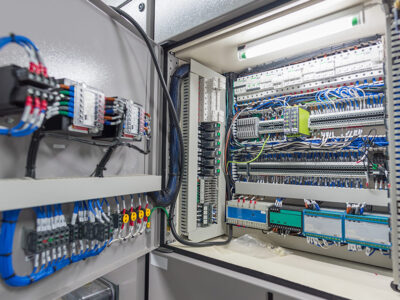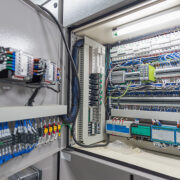
Maximizing Precision in Your Projects
When it comes to CNC routing, precision is a crucial factor that can make or break a project. The ability to execute precise cuts and shapes can significantly impact the quality and functionality of the final product. Understanding the importance of precision in CNC routing is essential for ensuring successful outcomes.
Understanding the Importance of Precision in CNC Routing
Precision in CNC routing refers to the accuracy and consistency in cutting and shaping materials. Whether you are working on wood, plastic, or metal, achieving precise measurements and cuts is crucial for producing high-quality results. Precision allows for intricate detailing, smooth edges, and a seamless fit of different parts, resulting in a superior finished product.
Furthermore, precision plays a vital role in minimizing waste. With accurate cuts, you can optimize material usage, reducing the amount of scrap and improving cost-efficiency. Additionally, precise CNC routing enables the production of complex designs that might be challenging to achieve manually.
The Advantages of High-Quality CNC Routing Machines for Precision
Investing in high-quality CNC routing machines can significantly enhance precision in your projects. These machines are built with advanced technologies and robust construction, enabling them to execute precise cuts consistently. Here are some key advantages of using high-quality CNC routing machines:
- Improved Accuracy: High-quality machines are designed to offer superior accuracy, allowing for precise cuts down to micrometer levels.
- Enhanced Stability: These machines are built with stability in mind, minimizing vibrations during cutting processes and ensuring precise movements.
- Advanced Control Systems: High-quality CNC routing machines are equipped with advanced control systems that provide precise control over the cutting parameters, resulting in accurate and consistent cuts.
- Robust Construction: The construction of these machines is designed to withstand heavy use and maintain precision over extended periods, reducing the chances of errors caused by machine wear.
How to Achieve Consistent Precision with CNC Routing Machines
While investing in high-quality CNC routing machines is essential, achieving consistent precision also requires attention to other factors. Here are some strategies to ensure accurate and consistent results:
- Calibration: Regularly calibrate your CNC routing machine to ensure accuracy. This includes checking and adjusting parameters such as spindle speed, tool diameter, and feed rates.
- Proper Tool Selection: Selecting the right cutting tools for your project is crucial for achieving precision. Consider factors such as material type, tool diameter, and cutting speed to optimize the results.
- Material Preparation: Ensure the material you are working with is properly prepared, including proper clamping and securing to minimize any movement during the cutting process.
- Testing and Fine-Tuning: Conduct test cuts on scrap material before starting the actual project. This allows you to fine-tune settings and make any necessary adjustments to achieve the desired precision.
Boosting Efficiency with Advanced CNC Routing Machines
Efficiency is another critical aspect of CNC routing that can significantly impact productivity and overall project timelines. Advanced CNC routing machines offer innovative features and technologies that can streamline operations and boost efficiency levels.
The Role of Efficiency in CNC Routing Projects
Efficiency in CNC routing refers to the ability to produce high-quality results in a timely manner. In today’s competitive business environment, efficiency is crucial for staying ahead of the competition and meeting customer demands. Here are some key reasons why efficiency is vital in CNC routing projects:
- Reduced Lead Times: Improved efficiency allows for faster production turnaround times, enabling businesses to meet tight deadlines and customer expectations.
- Cost Savings: Efficient CNC routing reduces wastage of materials, leading to cost savings for businesses. Additionally, faster production times can result in increased productivity and revenue generation.
- Increased Capacity: By optimizing the CNC routing process and reducing production times, businesses can enhance their capacity to take on more projects and meet growing customer demands.
The Latest Technological Innovations for Efficient CNC Routing
Advancements in technology have revolutionized the CNC routing industry, offering new possibilities for improving efficiency. Here are some of the latest technological innovations that can enhance efficiency in CNC routing:
- Automatic Tool Changers: CNC routing machines equipped with automatic tool changers allow for seamless tool switching, reducing downtime and optimizing production.
- Multi-Spindle Heads: Machines with multi-spindle heads enable simultaneous cutting and drilling operations, significantly reducing overall production times.
- Real-Time Monitoring: Advanced CNC routing machines come with real-time monitoring capabilities, allowing operators to track and optimize processes on-the-go.
- Integrated Software Solutions: Software solutions that integrate design, simulation, and toolpath optimization streamline the CNC routing process, enhancing efficiency and accuracy.
Proven Strategies for Optimizing Efficiency with CNC Routing Machines
While advanced CNC routing machines offer enhanced efficiency, certain strategies can further optimize their performance. Here are some proven strategies for optimizing efficiency with CNC routing machines:
- Effective Workflow Planning: Develop a well-defined workflow that ensures smooth transitions between design, toolpath generation, machine setup, and production, minimizing downtime and maximizing productivity.
- Batch Processing: Grouping similar parts or projects together for simultaneous machining can significantly reduce setup and changeover times, increasing overall efficiency.
- Continuous Training: Regularly train operators on the latest machine capabilities and best practices to maximize efficiency and minimize errors.
- Maintenance and Upkeep: Conduct routine maintenance and inspections to keep the CNC routing machine in optimal condition. This includes cleaning, lubrication, and replacing worn-out components.
Choosing the Right CNC Routing Machine for Your Needs
Choosing the right CNC routing machine is crucial for ensuring optimal performance and achieving desired results. With a wide range of options available in the market, it’s essential to consider key factors before making a decision.
Key Factors to Consider When Selecting a CNC Routing Machine
Selecting the right CNC routing machine requires careful consideration of various factors. Here are some key factors to consider when choosing a CNC routing machine:
- Project Requirements: Determine the specific requirements of your projects, including the materials you will be working with, the sizes and shapes you need to cut, and the production volume.
- Machine Size and Cutting Area: Consider the physical dimensions of the machine and its cutting area to ensure it can accommodate your project needs.
- Spindle Power and Speed: Evaluate the spindle power and speed options to ensure they align with the materials and cutting operations you plan to undertake.
- Control System and Software Compatibility: Ensure that the CNC routing machine’s control system and software are compatible with your design and programming requirements.
- Budgetary Constraints: Set a budget and explore options that fit within your financial limitations while still meeting your project requirements.
The Different Types of CNC Routing Machines and Their Benefits
CNC routing machines come in various types, each offering unique benefits and suitability for specific applications. Here are some common types of CNC routing machines:
- 3-Axis CNC Routers: These machines offer three axes of motion (X, Y, and Z), making them suitable for a wide range of applications, including flat sheet cutting, 2D profiling, and engraving.
- 4-Axis CNC Routers: 4-axis routers add an additional rotary axis (usually referred to as the A-axis) to the 3-axis configuration, allowing for more complex and intricate cuts, such as curved surfaces and three-dimensional shapes.
- 5-Axis CNC Routers: 5-axis routers provide the ability to move the cutting tool along five axes (X, Y, Z, as well as rotation around the X and Y axes). These machines are ideal for cutting complex shapes and performing highly detailed work.
- Multi-Head CNC Routers: Multi-head routers enable multiple cutting heads to work simultaneously, increasing productivity and reducing overall production times.
Understanding the different types of CNC routing machines and their benefits can help you choose the most suitable option for your specific needs.
Tips for Evaluating the Quality and Reliability of CNC Routing Machines
Investing in a high-quality and reliable CNC routing machine is crucial for long-term success. Here are some tips to evaluate the quality and reliability of CNC routing machines:
- Research and Reviews: Conduct thorough research and read customer reviews to gather insights into the performance and reliability of different CNC routing machines.
- Manufacturer’s Reputation: Consider the reputation and track record of the manufacturer. Look for companies with a history of producing high-quality machines and providing excellent customer support.
- Warranty and Service: Check the warranty provided by the manufacturer and the availability of reliable service and support options.
- Testing and Demonstrations: Whenever possible, visit manufacturers or attend trade shows to test and see the machines in action before making a purchase.
Mastering CNC Routing Techniques for Superior Results
Mastering CNC routing techniques is essential for achieving superior results and unlocking the full potential of your CNC routing machine. By developing essential skills, understanding programming and design principles, and implementing best practices, you can take your CNC routing projects to the next level.
Essential Skills and Techniques for Effective CNC Routing
Effective CNC routing requires mastery of certain skills and techniques. Here are some essential skills and techniques to develop for effective CNC routing:
- Basic CAD/CAM Skills: Familiarize yourself with computer-aided design (CAD) and computer-aided manufacturing (CAM) software to create and optimize designs for CNC routing.
- Understanding Material Properties: Gain knowledge of different material properties and how they behave during the CNC routing process. This understanding will help you choose appropriate feed rates, cutting speeds, and tooling options.
- Tooling Selection and Maintenance: Learn how to select the right cutting tools for different materials and applications. Additionally, develop maintenance routines to keep your tools in optimal condition for prolonged use.
- Clamping and Fixturing: Understand the importance of proper clamping and fixturing techniques to secure the materials and prevent movement during the routing process.
The Art of Programming and Designing for CNC Routing Machines
Programming and designing for CNC routing machines require a combination of technical knowledge and creativity. Here are some key aspects to consider when programming and designing for CNC routing machines:
- Toolpath Optimization: Optimize toolpaths to minimize tool changes, reduce cutting times, and enhance efficiency. This involves considering factors such as cutting direction, entry and exit points, and cutter engagement.
- Design Compatibility: Ensure your design files are compatible with the CNC routing software and machine. Pay attention to file formats, scaling, and alignment to avoid any issues during the manufacturing process.
- Efficient Nesting: When working on multiple parts, efficient nesting involves arranging them strategically on the material to minimize waste and maximize material usage.
- Safety Considerations: Incorporate safety features into your designs, such as tabs or bridges, to prevent workpiece movement during cutting and increase operator safety.
Best Practices for Maintaining and Operating CNC Routing Machines
Proper maintenance and operation of CNC routing machines are essential for prolonging their lifespan and ensuring optimal performance. Here are some best practices to follow:
- Regular Cleaning and Lubrication: Keep your CNC routing machine clean and free of debris. Regularly lubricate moving parts to prevent wear and ensure smooth operation.
- Monitor and Replace Wearable Components: Monitor the condition of important components such as spindles, bearings, and belts. Replace them when signs of wear or deterioration become evident.
- Operator Training and Safety: Train operators on proper machine operation and safety procedures to minimize the risk of accidents and ensure efficient use of the equipment.
- Documentation and Record-Keeping: Maintain detailed records of maintenance activities, machine settings, and successful cutting parameters. This documentation serves as a reference for troubleshooting and future projects.
By implementing these best practices, you can maximize the lifespan and performance of your CNC routing machine, resulting in superior results and increased productivity.
FAQ
Question: What is precision in CNC routing? – Precision in CNC routing refers to the accuracy and consistency in cutting and shaping materials. It involves achieving precise measurements and cuts for high-quality results, intricate detailing, and minimal waste.
Question: How can high-quality CNC routing machines enhance precision? – High-quality CNC routing machines offer improved accuracy, enhanced stability, advanced control systems, and robust construction. These features enable precise cuts down to micrometer levels and maintain accuracy over extended periods.
Question: What strategies can help achieve consistent precision with CNC routing machines? – Consistent precision can be achieved through regular calibration, proper tool selection, material preparation, and testing. Calibrating the machine, selecting the right cutting tools, preparing the material properly, and conducting test cuts on scrap material are essential for accurate and consistent results.
Question: Why is efficiency important in CNC routing projects? – Efficiency in CNC routing projects allows for reduced lead times, cost savings, and increased capacity. It enables faster production turnaround, minimizes material wastage, and enhances the ability to meet customer demands and take on more projects.
Question: What technological innovations enhance efficiency in CNC routing? – Advanced CNC routing machines come with automatic tool changers, multi-spindle heads, real-time monitoring capabilities, and integrated software solutions. These innovations streamline operations, reduce downtime, and optimize the CNC routing process for improved efficiency.
Question: How can efficiency be optimized with CNC routing machines? – Effective workflow planning, batch processing, continuous training, and regular maintenance are proven strategies for optimizing efficiency with CNC routing machines. Developing a well-defined workflow, grouping similar parts for simultaneous machining, providing training to operators, and conducting routine maintenance help maximize efficiency and minimize errors.
Question: What factors should be considered when selecting a CNC routing machine? – When selecting a CNC routing machine, project requirements, machine size and cutting area, spindle power and speed, control system and software compatibility, and budgetary constraints should be considered.
Question: What are the different types of CNC routing machines and their benefits? – CNC routing machines come in various types including 3-axis, 4-axis, 5-axis, and multi-head routers. 3-axis routers are suitable for flat sheet cutting and 2D profiling, 4-axis routers allow for more complex cuts, 5-axis routers enable cutting of complex shapes, and multi-head routers increase productivity by allowing multiple cutting heads to work simultaneously.
Useful Resources:











